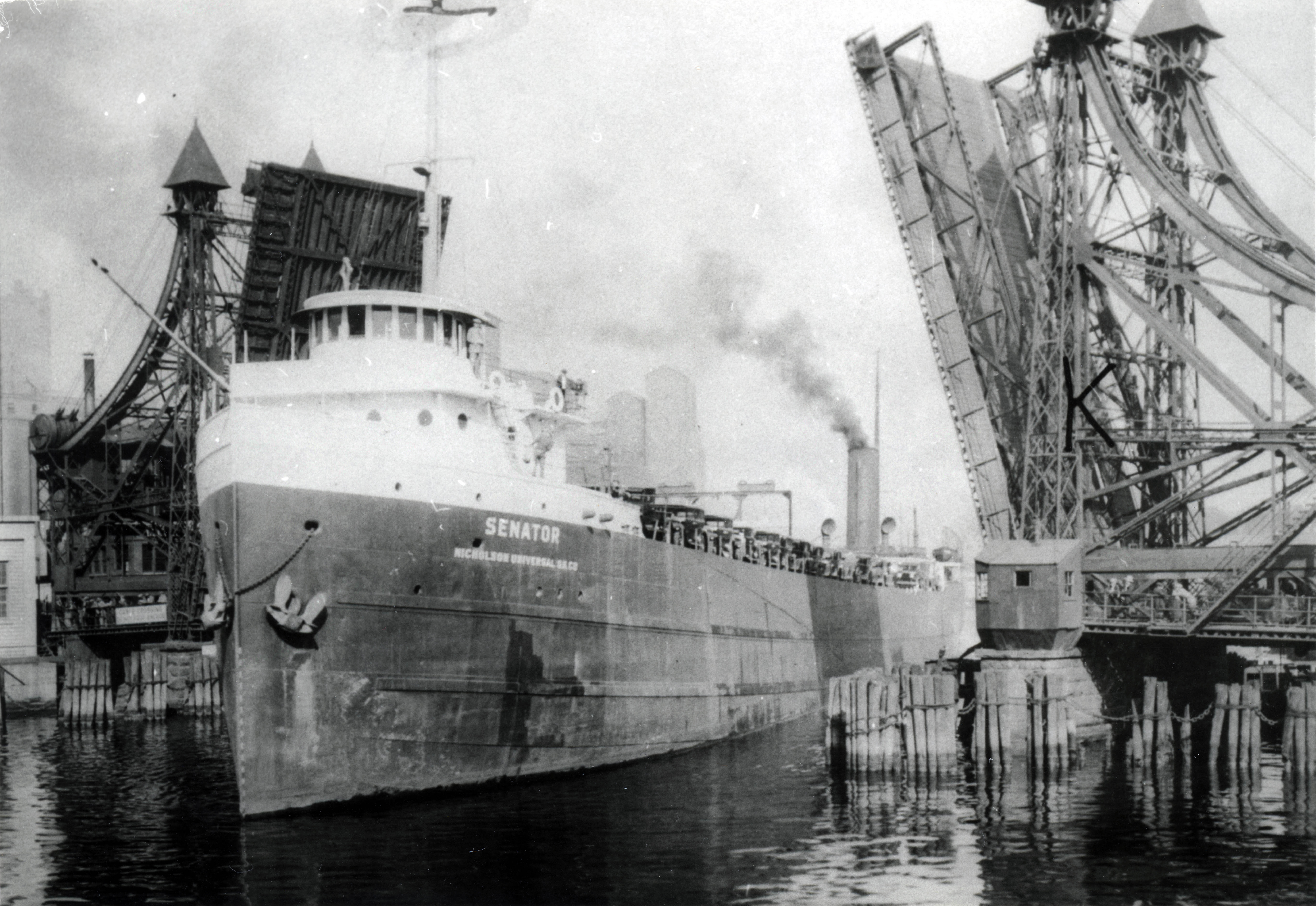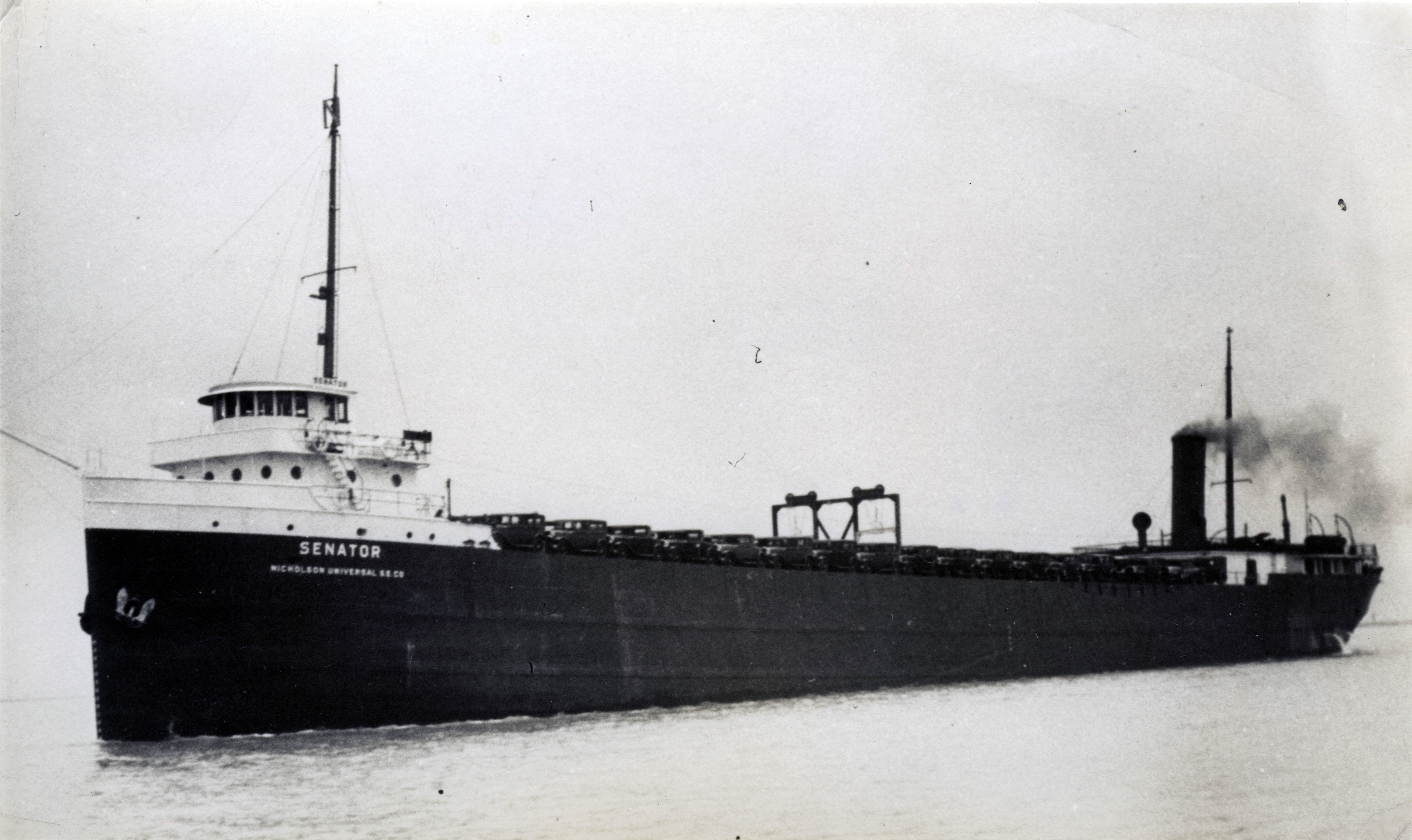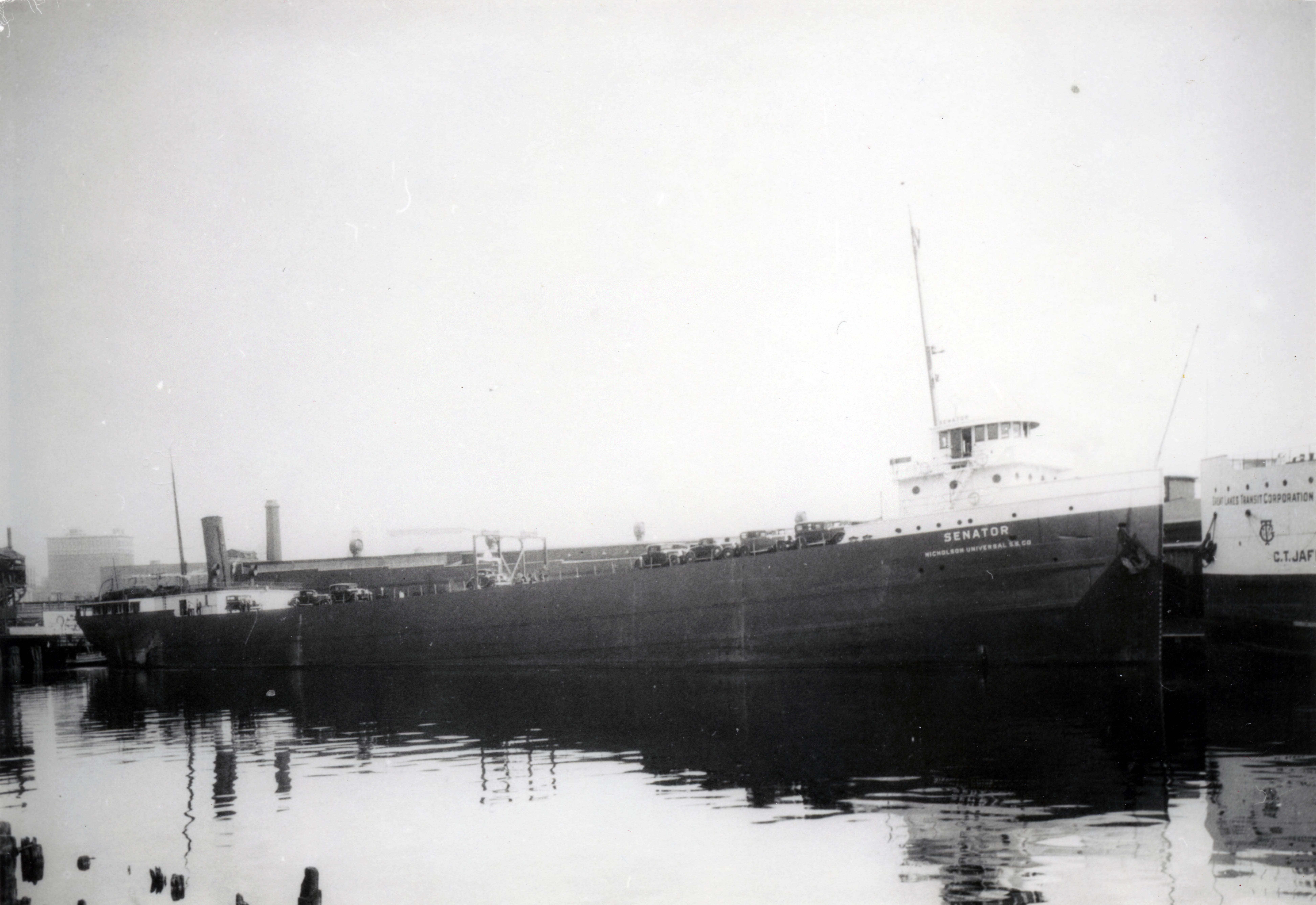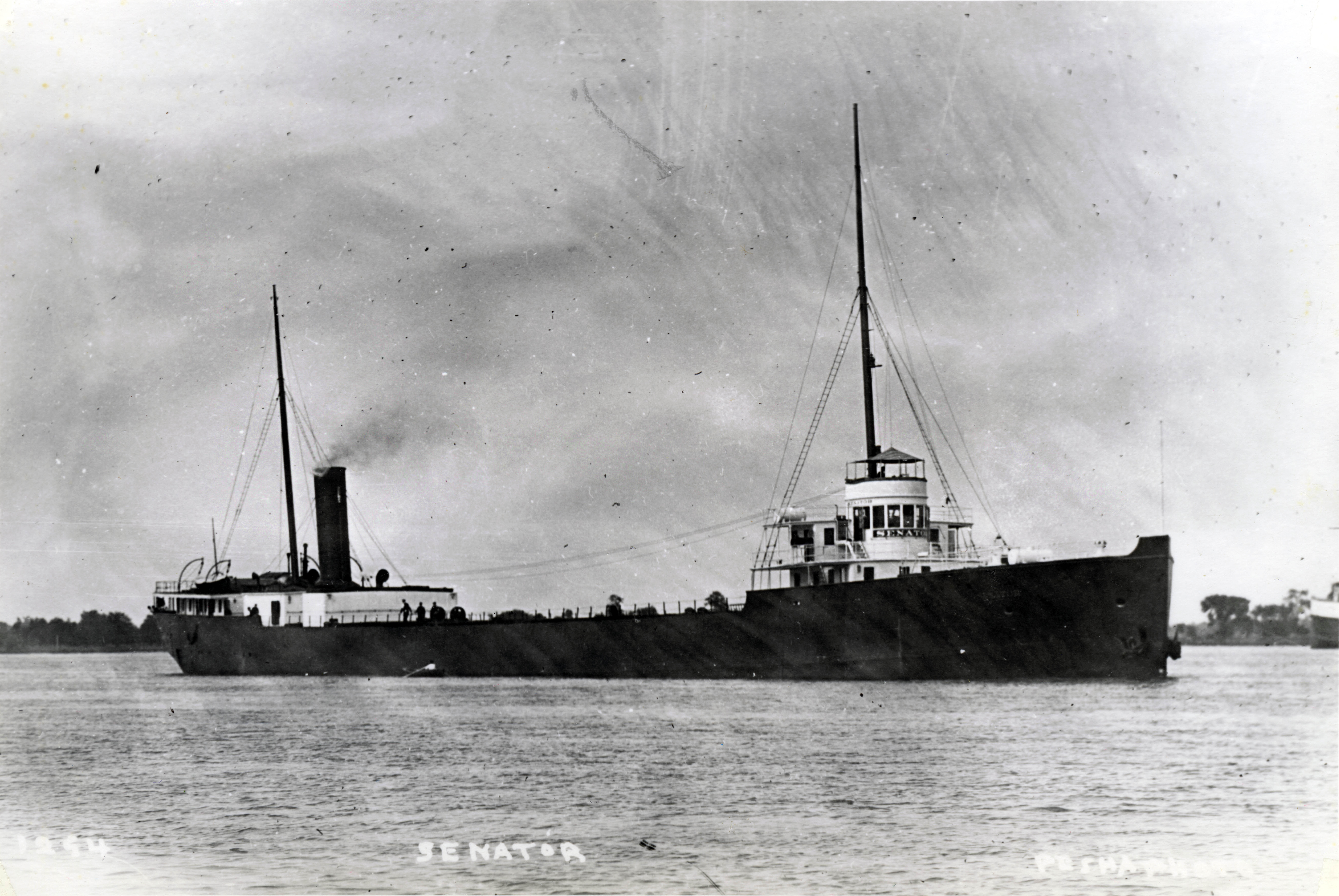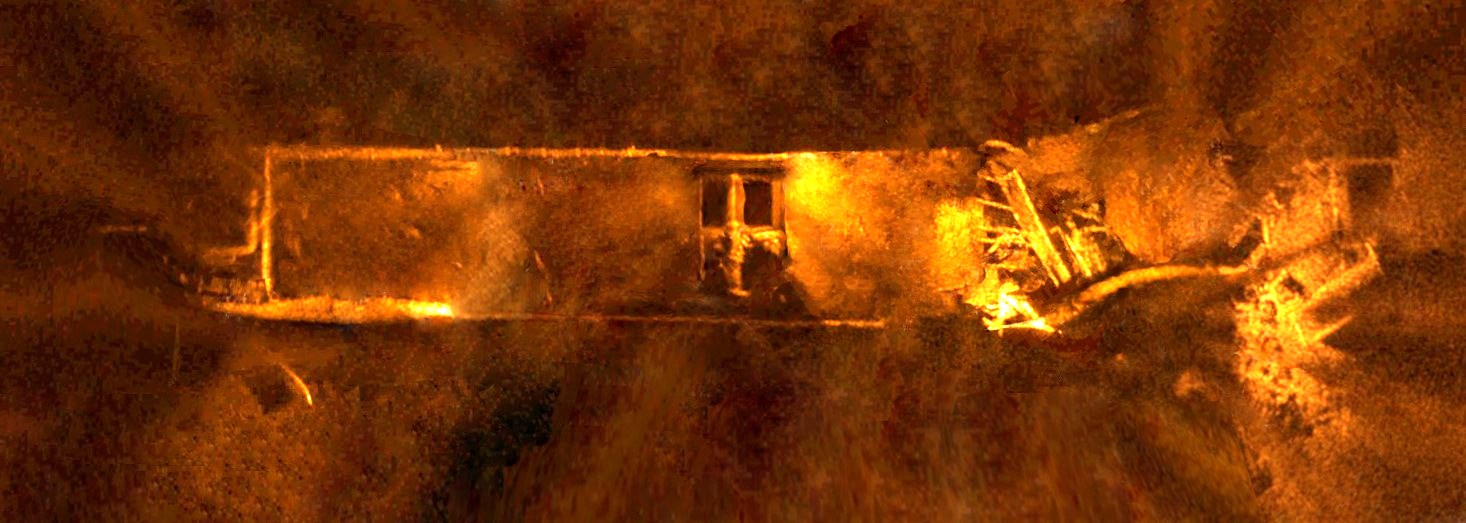Service History
The steel bulk carrier
Senator was built for the Wolverine Steamship Company and employed early steel vessel construction techniques that included steel arches and a moveable water ballast system. The
Senator spent three weeks on the bottom of the St. Mary's River after colliding with the steamer
Norman B. Ream. The ship was bought and sold many times, finally being purchased in 1929 by the Nicholson Universal Steamship Company of Delaware who altered her tonnage and added a cargo elevator to aid in transportation of new automobiles on the Great Lakes. At this time, August 7, 1929, she was remeasured and reenrolled reflecting these changes.
Final Voyage
On the morning of October 31, 1929, the
Senator was rammed amidships by the iron ore laden bulk carrier,
Marquette off Port Washington, Wisconsin, while navigating in a dense fog. The fog was so thick the crews of the boats said they couldn't see one another until they were too close to avoid the crash. Both vessels were reportedly sounding their fog horns. The
Marquette struck the
Senator just aft of amidship on her port side. The
Marquette quickly pulled free of the
Senator and water flooded in the gaping hole. The
Senator began to list to port. The
Senator quickly settled at the stren, the bow rose high in the air, and she slid beneath the waves eight minutes after the collision.
The
Marquette’s captain neglected to turn back to assist the crew of the
Senator; and seven men drowned.On that day of the accident, she was transporting 268 Nash automobiles from Milwaukee to Detroit.
Today
The
SS Senator lies in nearly 500 feet of water 16 miles northeast of Port Washington. She is setting upright facing in a northeast direction. The pilot house and engineering spaces are intact. Today the cargo on Nash automobiles remains with the vessel. Cars that were attached to deck have slid aft onto the sand, those that remain inside the vessel's hull remain chained in place. This grouping is considered the largest unmodified collection of early Wisconsin-built automobiles known to exist.
The shipwreck was reported by Wisconsin Department of Natural Resources in 2015. Data on the shipwreck and current observations were collected by remotely operated vehicle (ROV) and multi beam sonar imagery.
